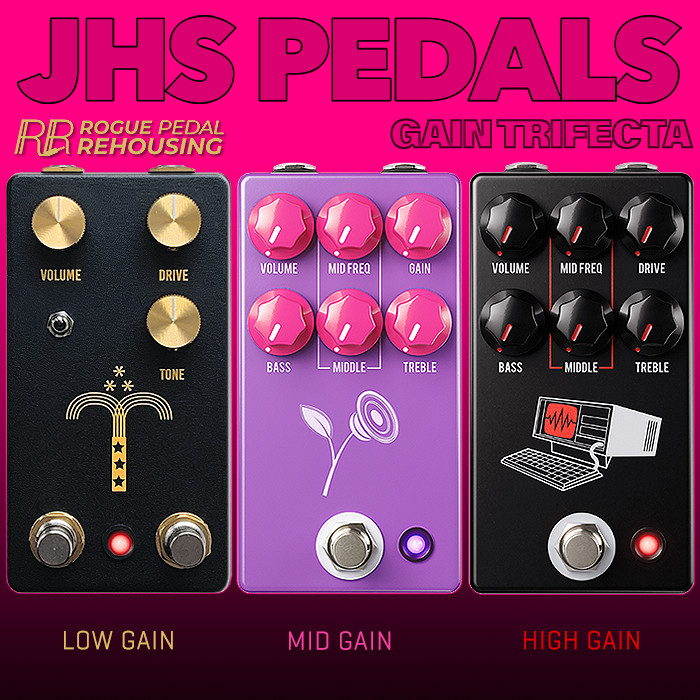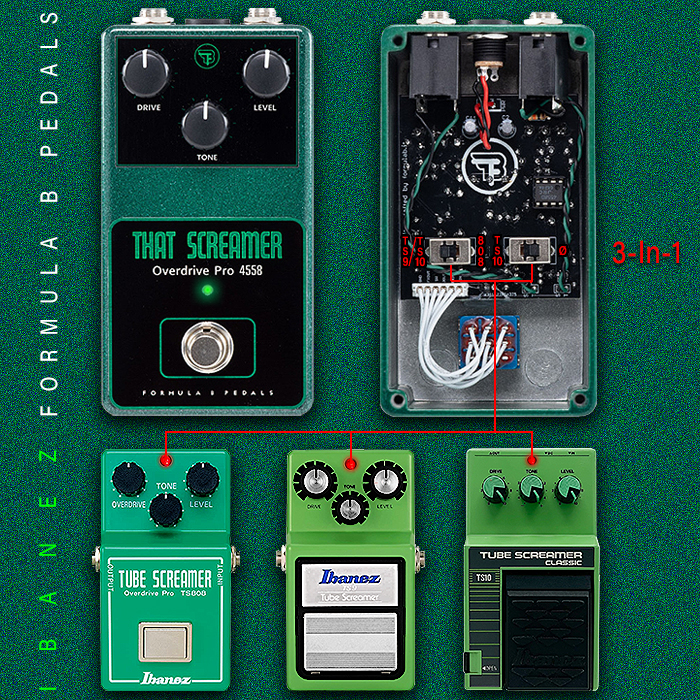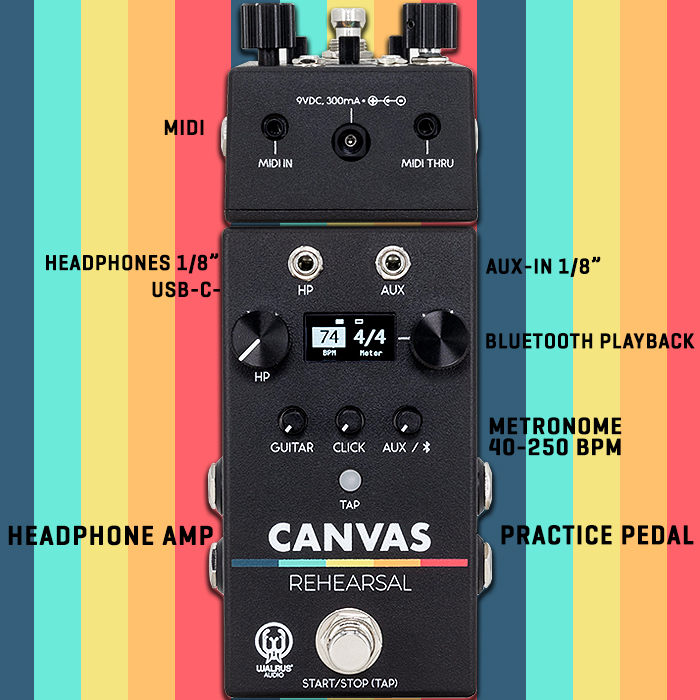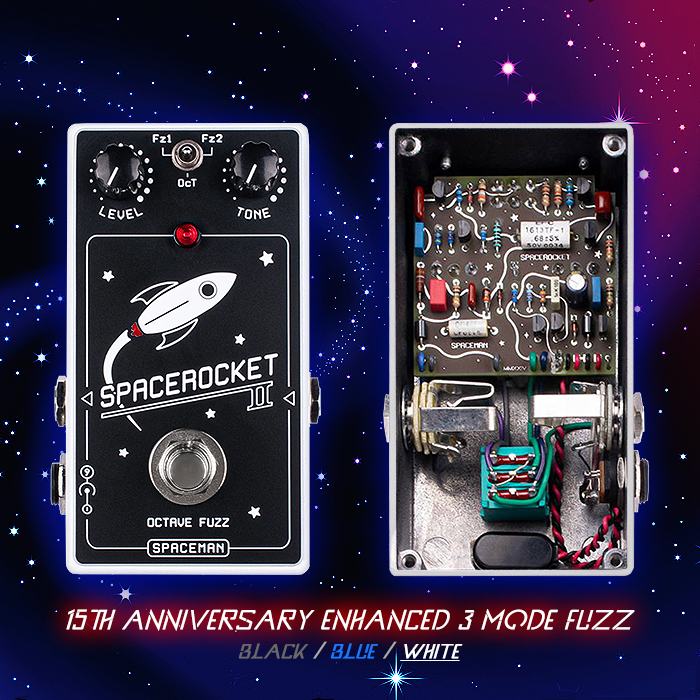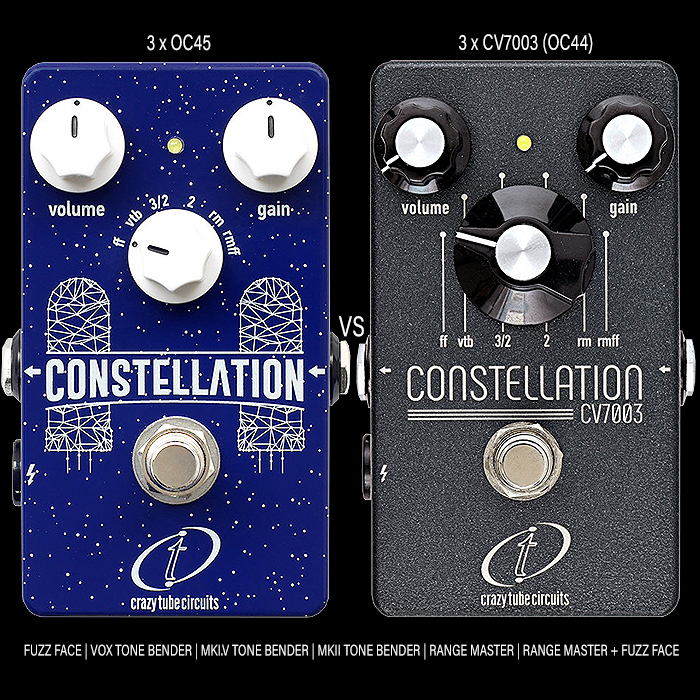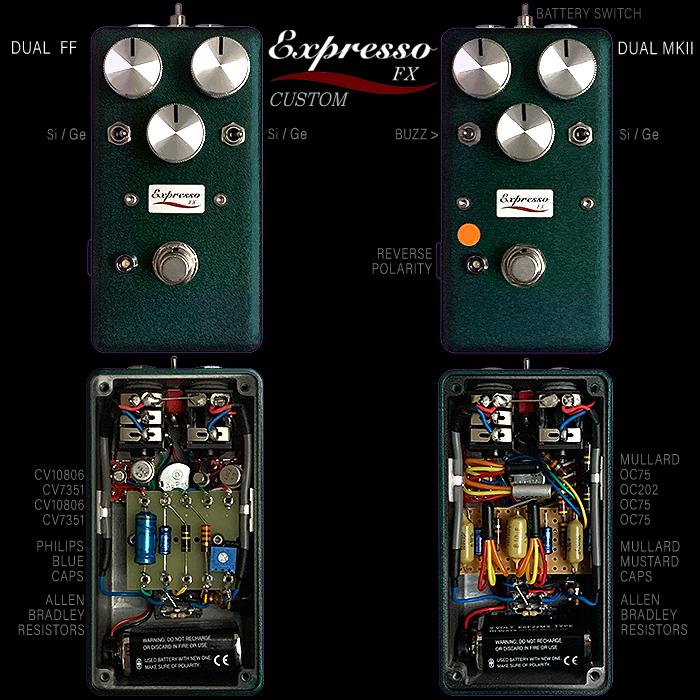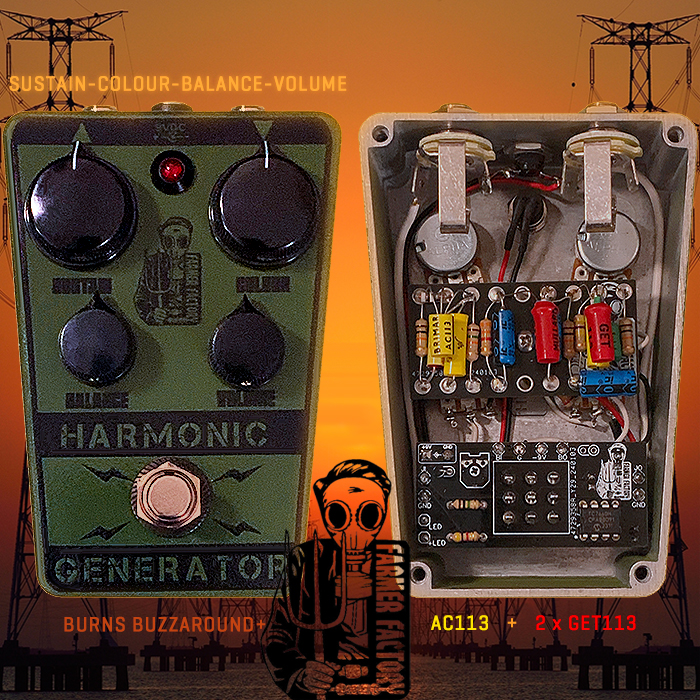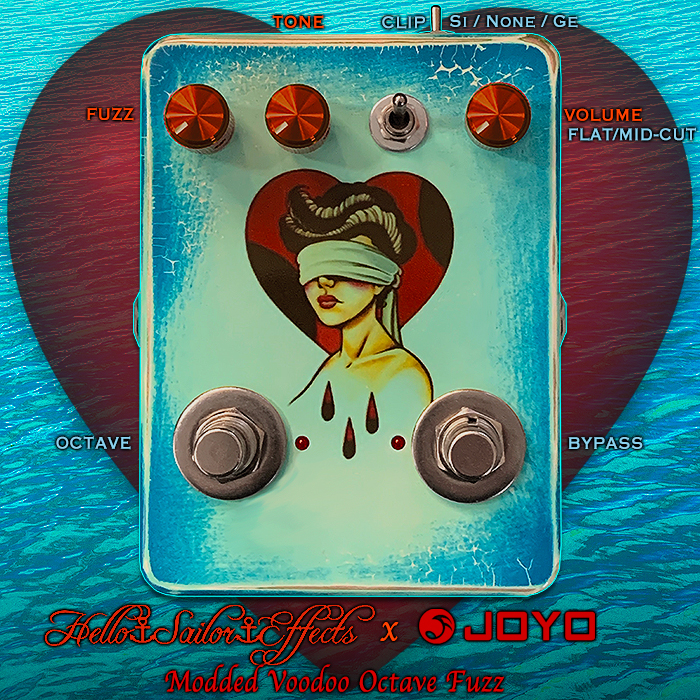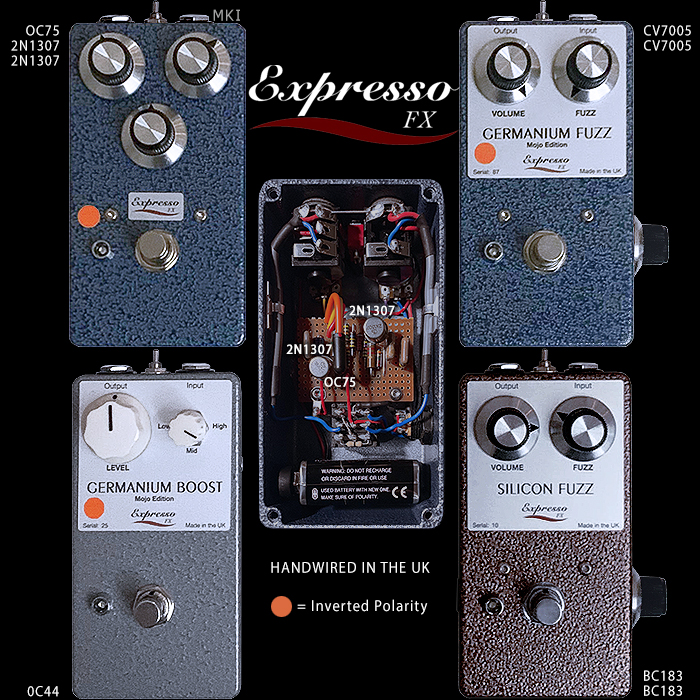12 Compact Fuzz Pedal Pairs Capsule Collection
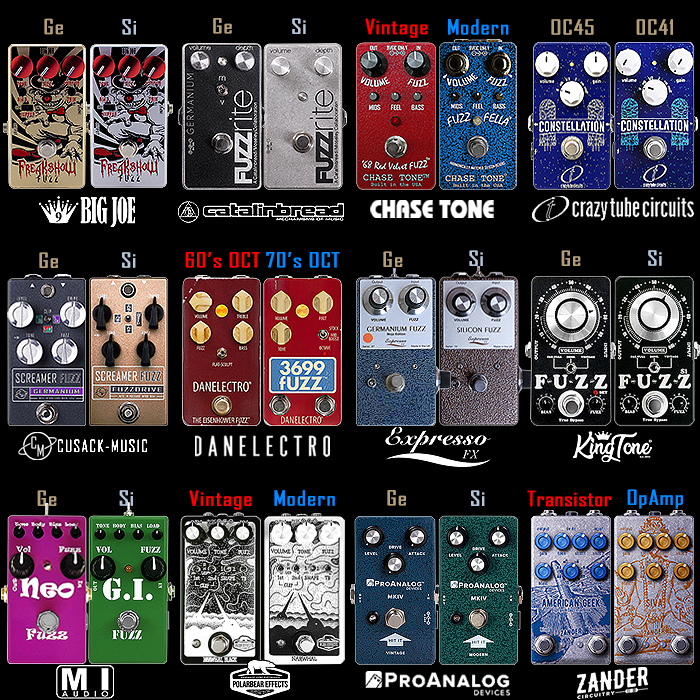
As has been variously covered on this site - I have a rather extensive reference collection of pedals - amounting to somewhere north of 1,300 currently - and where well over half, or 700+ of those are fuzz variants - including more than 110 Big Muff types, more than 100 Fuzz Faces, and somewhere over 50 Tone Bender variants.
I often enjoy the symmetry of specific pedal pairs - and have a number of those in the collection - where this feature is one such subset - really just the most obvious ones that come to mind! There are approximately three to 4 times more overall actual ’pairs’ in the collection, including further notable ones by Basic Audio, Big Tone Music Brewery, Drunk Beaver, Great Eastern FX, Loe Sounds, PastFX, and Skreddy Pedals etc.! I’ve actually started this article half a dozen times over a period of a few years now, so these are largely pedals that have been in the collection for longer! I will likely do a further follow-up in any case with some of the more recently added one!
These are mostly Germanium and Silicon Fuzz Face pairs, but also Fuzzrites, Tone Benders, Octave Fuzzes, and Big Muffs!
As exemplified by the first listed pair - pretty much all of these were acquired individually. Where for the Big Joe Freakshow Fuzzes - I acquired the Germanium one direct from the USA right when these were first released, and then snagged the Silicon variant discounted on Andertons - a few years later! The only exception here is the Expresso FX pair - which I acquired at the same time - all else here came in from different directions following an extended period since the first one was acquired.
The 12 Pairs are as follows :
- Big Joe Stomp Box Company : Freakshow Fuzz Germanium, and Silicon - $190
- Catalinbread : Fuzzrite Germanium, and Silicon - $179
- Chase Tone : ’68 Red Velvet BC183 and Fuzz Fella BC108C - $130 / $135
- Crazy Tube Circuits : Constellation Original (OC45), and V2 (OC41) - $275
- Cusack Music : Screamer Fuzz Germanium Ltd, and V3 Standard - $205 / $185
- Danelectro : Eisenhower Fuzz, and 3699 Octave Fuzzes - $149 / $199
- Expresso FX : Germanium CV7005 Fuzz + Silicon BC183 Fuzz - $325 / $315
- King Tone Guitar : miniFUZZ Ge, and Si - $250 when new
- MI Audio : Neo Fuzz (Ge), and GI Fuzz (Si) - $159 when new
- PLBR Effects : Narwhal Black Vintage, and White Modern Muffs - $125 when new
- ProAnalog Devices : MKIV Vintage, and Modern - $199 / $299 when new
- Zander Circuitry : American Geek Transistor, and Siva Opamp Muffs - $189
Note that when the controls are identical for both pedals in the pair - I apply the notation (x2), while when, and where there are differences, I write out each pedal’s controls separately!
Here follow the details per each featured pair :

Big Joe Stomp Box Company : Freakshow Fuzz Germanium, and Silicon - $190
Controls (x2) - Tone, Fuzz, Output, Bias, Input Gain Trim / Cleanup, Buffer : Off / On.
This article somewhat brings back home the bitter pain of 'Brexit', as there are so many brands that I used to be able to buy direct from, but who now don't / won't / can't ship to the UK - that includes Big Joe Stomp Box, and Cusack Music among several such instances. I acquired the Germanium Freakshow Fuzz direct from Big Joe, and then a couple or so years later I picked up the Silicon pair (with a discount) from Anderson in the UK. I later tried to buy one of those cool Big Joe Power Box L12's rechargeable power supplies - long since sold out in the UK, but by that time Big Joe was already no longer shipping to the UK - so I ended up getting that pedal from another US dealer that was active on Reverb.com - it was my one and only option! In any case the Freakshow fuzzes are built like tanks, with primo components and superior sound - really neat control topologies for fuzz faces actually - they have a Mjölnir level weight to them, and will likely turn up as a murder weapon some time in the distant future! Those pedals are possibly even more indesctuctible than the Boss ones!
Catalinbread : Fuzzrite Germanium, and Silicon - $179
Germanium Controls - Volume, Depth, Voicing : Modern / Vintage.
Silicon Controls - Volume, Depth.
Both Fuzzrites sound great - but are kind of different really too - the original Silicon one is proper raw and garage-punk-y, while the Germanium one is both more textured - in terms of its core harmonics - while at the same time somewhat more refined. I really like the Silicon version, but I absolutely love the Germanium one!
Chase Tone : '68 Red Velvet BC183 and Fuzz Fella BC108C - $130 / $135
Controls (x2) - Volume, Fuzz, Mids, Feel (Bias Voltage / Starve), Bass.
Kyle Chase is something of a specialist in delivering Germanium sounds from a BC183 Silicon Transistor - where his Red Velvet is at the Apex of that Art - one of the best Type III Fuzz Faces out there - with a fantastic extended range control topology. This Silicon sounding Fuzz Fella has appeared in both BC108 and BC109 editions - and delivers those classic later Jimi Hendrix Tones - to Type II Fuzz Face as I classify it. Both are pretty stellar, but the Red Velvet is really the one to own!
Crazy Tube Circuits : Constellation Original (OC45), V2 (OC41) - $275
Controls (x2) - Volume, Gain, Mode : Fuzz Face (1966) / Vox Tone Bender (1966) / MKI.V Tone Bender (1966) / MKII Tone Bender (1966) / RangeMaster (1965) / RangeMaster > Fuzz Face.
This is easily one of the best Multi-Fuzz pedals ever made - which I actually own in 3 editions - the original OC45, the V2 OC41, and V3 CV7003 (Mil.Spec OC44). Interestingly each of those has its own unique strengths, where for me the OC45 delivers the best Fuzz Face voicing, the OC41 is best for that TB MKII Jimmy Page sound, and of course the CV7003 / OC44 excels at RangeMaster textures. For this listing I decided to include the 2 Blue ones. They each take you through Fuzz Face, Vox Tone Bender, MK I.V Tone Bender, MKII Tone Bender, RangeMaster, and RangeMaster into Fuzz Face. All of them sound superb - while if I could only have 2 it would be the 2 blue ones!
Cusack Music : Screamer Fuzz Germanium Ltd, and V3 Silicon - $205 / $185
Germanium Controls - Level, Clip : Silicon / Germanium / LED, Drive, Tone, Fuzz.
V3 Silicon Controls - Level, Clip : Schottky / LED / Silicon, Drive, Tone, Fuzz.
A superb confection of Fuzz Face into Tube Screamer - all in the same box - where you can adjust the gain ratios of each, but then with universal Tone and Output Level! I'm of course delighted to own the limited Germanium edition, and overall I think I just about prefer the Germanium edition overall - while both sound really superb - such a beautifully richly textured soundstage! Note that I have the original Ltd Edition of the Germanium Screamer Fuzz - with the 3-way Clipping switch - later models did not have the switch, and in fact no demos seem to have been recorded of the original limited edition version! It's kind of odd that the Germanium edition comes in a grey box, and the Silicon variety in a Gold one, where I would have inverted those two colour values to match the Big Joe colourways!
Danelectro : Eisenhower Fuzz, and 3699 Octave Fuzzes - $149 / $199
Eisenhower Controls - Volume, Treble, Fuzz, Bass, Voting : Flat / Sculpt.
3699 Controls - Volume, Fuzz, Tone, Voice : Stock / Mid Boost, Fuzz Footswitch, Octave Footswitch.
Two similarly Octave Fuzzes, but quite different and distinct, one based on the late 60's Japanese Shin-ei / Univox SuperFuzz, and the other based on the early 70's American Foxx Tone Machine. So both sort of harmonic octave fuzzes and each with a beautiful textured bloom to it - in particular the SuperFuzz / Eisenhower variety. I acquired each of these as and when they materialised - and I'm looking to complete the further set by picking up Danelectro's latest Nichols 1966 Fuzz! I really love both the Eisenhower and 3699 pretty much equally - each does its own genre thing superbly.
Expresso FX : Germanium CV7005 Fuzz + Silicon BC183 Fuzz - $325 / $315
Controls (x2) - Volume, Fuzz, Bias.
I really need to re-connect with my formerly very good friend Sof Teboune - where at the start of our association we got on really well, and used to have catchup chats on almost a monthly basis - but for some reason things got a bit strained / awkward during the covid era (certainly not me!), and despite best intentions, we have not spoken since. I'm really at a loss to know why - it's as if suddenly a switch was just flipped. In any case I enormously enjoyed my early association with Expresso FX - where I acquired 4 classics at the start of that relationship - including the 2 featured here - each very much at the top of its game. Sof's work is and has always been top drawer! - and he deserves to have as much appeal as Reeves Electro, while that might never happen. In latter years he's very much switched to very small batches - and in fact makes a variety of pedals in the smaller sizes now - which he was somewhat resistant to do during our main period of association, but seems to have come over to my way of thinking! I enjoyed several adventurous projects with Sof - including his early experimental period with powder coating - a skill he has now mastered to an incredible standard! I sincerely hope to do more with Sof soon - we had a few projects on the go alas which never materialised - perhaps their time is finally upon us!
King Tone Guitar : miniFUZZ Ge, and Si - $250 when new
Controls (x2) - Volume, Voicing / EQ : Fat-Full / Zonk / Vintage, Bias, Fuzz.
This was one of the few times where I intended on getting both pedals from the start - while they still followed largely the same pattern of the Germanium variety being acquired a year or two head of the Silicon one. A lot of the time that has to do with general availability, and the propensity of special offers. Normally if you wait it out a little - you can get the second pedal at a somewhat lower rate. There's a little subterfuge here with the Ge variant, as it purports to use Newmarket NKT275 Transistors, where it's using a later grey market skinny tin can variant - which is obviously not fully kosher - but nevertheless, and almost besides the point - still delivers pretty stellar outputs. This particularly pair has long been lauded, of course replaced more recently by a Twin Silicon and Germanium varieties in the one box V2 miniFuzz edition - which of course I also have - that comes with a load of external dip-switches too for really extensive output-shaping. There's still something special about the elegance of the original two that endures! I'm very glad that I have all the King Tone miniFUZZES in the reference collection. The Silicon variety is a really decent Type III BC183 Fuzz Face take - I really like both here! I'm also waiting for the Octaland to come out in silver edition - to match my Duellist and V2 minFUZZ!
MI Audio : Neo Fuzz (Ge), and GI Fuzz (Si) - $159 when new
Controls (x2) - 3-Way Brightness (Top), Tone, Body, Bias, Load (Input Impedance), Volume, Fuzz.
I've always loved Michael Ibrahim's pedals, and have a fairly extensive collection of his compact editions - where I have several favourites from within that range - including these two Germanium Neo, and Silicon GI Fuzz Face Types. Actually very much loved by my friend and King Demoer Andy Martin - which was an added inspiration for me to get these. He still to this day regularly uses the Neo variety in particular - it's a really great AC128 Type I Fuzz Face variant - with really smart extended range controls!
PLBR Effects : Narwhal Black Vintage, and White Modern Muffs - $125 when new
Controls (x2) - Volume, Tone, Fuzz (Gain), 1st Stage Clipping : Silicon/None/LED, 2nd Stage Clipping : Silicon/None/LED, Shape : 1 Mids Push/2 Scooped, TB : Tone Bypass.
An interesting pair of Multi-Muffs, where the White more aggressive and punchy 'Modern' variety appeared first, and then later we got the Black slightly smoother and softer 'Vintage' style one. Darko Vadja's Big Muff takes are quite distinctive - with typically unique control topologies - and they each sound somewhat different and distinct - while also overlapping with those various classic Big Muff variants. I also have the larger even more granular PLBR Maritimus Muff. Really unique takes on that circuit!
ProAnalog Devices : MKIV Vintage, and Modern - $199 / $299 when new
Controls (x2) - Level, Drive, Attack.
A really interesting Scotty Smith circuit in 2 variants - which sits somewhere between Fuzz Face and Tone Bender variants - but somewhere to the side too - where these can deliver really cool overdrive sounds too. The MKIV moniker makes it sound like it's a Tone Bender variant, and it kind of is to a degree - but is quite a bit different to any of those classics. For sure in some ways closest to TB MKIII / IV - where the Vintage one in particular can deliver really great liquid distortion tones. A really fantastic circuit for sure - and particularly in the Vintage variety!
Zander Circuitry : American Geek, and Siva Muffs - $189
Controls (x2) - Gain, Tone, Shift 1 RC Filter Adjust, Shift 2 RC Filter Adjust, Blast Max Gain Level, Clipping : Ge / Si / LED / Asym Ge / Asym Si / Asym LED / Tran|MOSFET / No Diodes, Level, Blast Max Gain Footswitch, Engage / Effect On Footswitch.
A fantastic pair of Multi-Muffs - one Transistor-based, and the other OpAmp / IC style Muff Circuit. These have actually been recently revamped with more conventional 3-Band EQ tone controls. I still have the original edition with the 2 Filter Adjustments - Shift 1 and Shift 2. Essentially your classic Big Muff Tone Stack consists of a pairing of LPF and HPF filters - where the 2 Shift controls allow you to fine-tune each of the internal filters - to bring back more mids into the tonality. I alternate between loving the Siva more than the Geek and then the Geek becomes my favourite - which means that I really like both of them - they each have a slightly different character - and therefore inspire slightly different styles of playing. And of course these feature the typical 8-way clipping section for a huge variation in core character and timbre!








